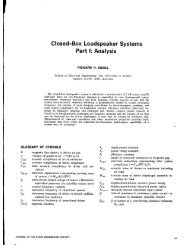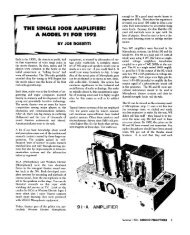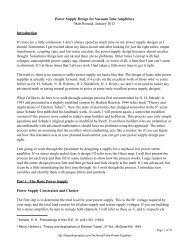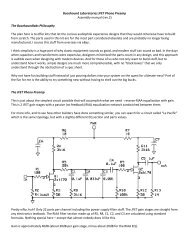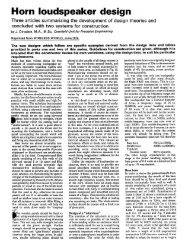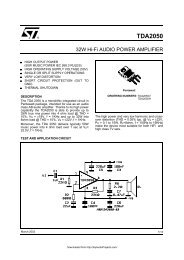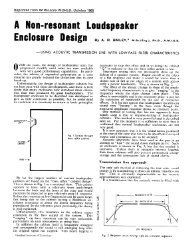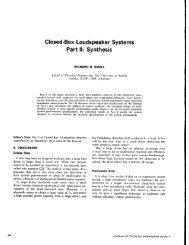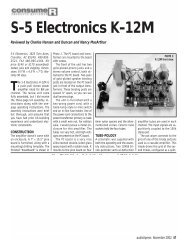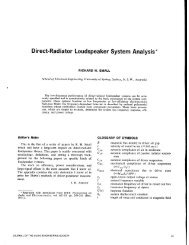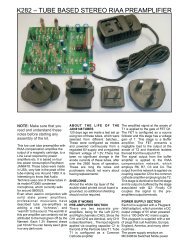A Model of Open-Baffle Loudspeakers - DIY Audio Projects
A Model of Open-Baffle Loudspeakers - DIY Audio Projects
A Model of Open-Baffle Loudspeakers - DIY Audio Projects
Create successful ePaper yourself
Turn your PDF publications into a flip-book with our unique Google optimized e-Paper software.
0.025,<br />
I<br />
$ 0.02 -<br />
3<br />
.z<br />
E 0.015-<br />
crs<br />
8<br />
g 0.01 -<br />
z:<br />
f!J<br />
a, 0.005 -<br />
u,<br />
2<br />
E o- \ ”<br />
-0.005 I<br />
0 0.001 0002 0 003 0.004 0.005 0.006 0.007 0.008 0.009 0.01<br />
Time/s<br />
Figure<br />
order,<br />
13. Impulse response <strong>of</strong> the scattered sound, taking into account the scattering up to Sh<br />
An interesting feature is that the average decay characteristics are almost perfectly exponential<br />
(Figure 14).<br />
-20<br />
-40<br />
-60 t<br />
%<br />
3i -80 -<br />
2 -100 -<br />
"a<br />
fii -120 -<br />
E-,40<br />
3<br />
-<br />
2 -160 -<br />
6<br />
-180 -<br />
0 0.001 0.002 0.003 0.004 0.005 0.006 0.007 0.008 0.009 0.01<br />
Time/s<br />
Figure 14. Decay characteristics <strong>of</strong> the scattered sound, plotted on a logarithmic scale.<br />
The importance <strong>of</strong> multiple scattering is clearly illustrated from the frequency responses calculated<br />
using the impulse responses shown above. (The edge impulse response is subtracted from the direct<br />
sound, if the sign <strong>of</strong> the diffracted sound is chosen as illustrated; in a physical system the sign <strong>of</strong> the<br />
diffracted sound in the illuminated region is opposite to the direct sound, and in the shadow region<br />
the same.) The response predicted using only single diffraction indicates too much low-frequency<br />
attenuation and too large local minima and maxima in the response.<br />
15



